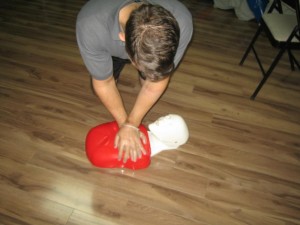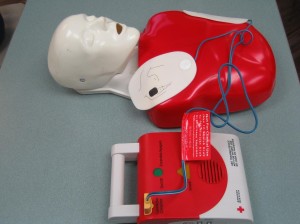
In the US, there are hundreds of training providers that offer CPR training. However, none of them offer better quality training for more affordable rates than us. We can be found in six cities all over the country, in five states. Because we maintain such a high quality in our CPR programs, all our locations offer the same programs for the same rates – and they’re all taught by certified CPR rescuers. The programs are available through the week (different schedules for each location), sometimes during evenings and weekends if we cannot accommodate all our trainees in the regular schedules.
You can sign up for CPR training at:
- Los Angeles CPR – Los Angeles, California
- San Francisco CPR – San Francisco, California
- Honoulu CPR – Honolulu, Hawaii
- Las Vegas CPR – Las Vegas, Nevada
- Seattle CPR – Seattle, Washington
- Portland CPR – Portland, Oregon
CPR and first aid courses
Because CPR and first aid are topics that go hand-in-hand when managing emergencies, all of our CPR classes include basic first aid training. We further divided our programs into basic and advanced training, as well as general public and health care provider classes. Currently, we only have one program available to laypersons (people who don’t work in health care); the rest of our programs are for health care providers and professionals.
Basic CPR will teach you how to perform three core skills in CPR:
- Chest compression – Manually pressing down on the chest will make the heart pump and send blood circulating to the body. Be sure to let the chest recoil before giving another compression, this allows the blood to circulate back to the heart before oxygenation.
- Ventilation – Oxygenate the blood through rescue breaths, since victims of cardiac arrest usually don’t breathe normally.
- Defibrillation – AEDs send electricity to the heart to return it to a normal rhythm. It cannot be done if the victim is experiencing asystole (flatline).
Our first aid lessons are very useful, focusing on the most common injuries that can be managed with first aid (or at least before medical help arrives). Basic first aid that we teach our trainees include splinting, bandaging, wound care, burn management, and many other basic techniques.
CPR classes

There are two categories of CPR to choose from, Basic Life Support or Advanced Life Support. Basic courses focus on one and/or two-person CPR rescue while advanced courses will delve into medical management. Only one of our courses (out of five) is available to the public; the rest are only for people in healthcare (providers and professionals).
- Basic Heartsaver training – one-person CPR, general public – BLS
- Basic Heartsaver C traning – one-person CPR, HCPs – BLS
- Basic Life Support for HCPs – one and two-person CPR, HCPs – BLS
- Advanced Cardiac Life Support – adult management – ALS
- Pediatric Advanced Life Support – pediatric management – ALS
